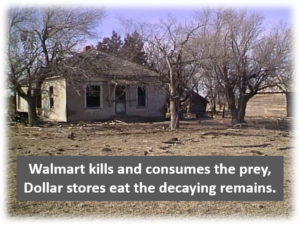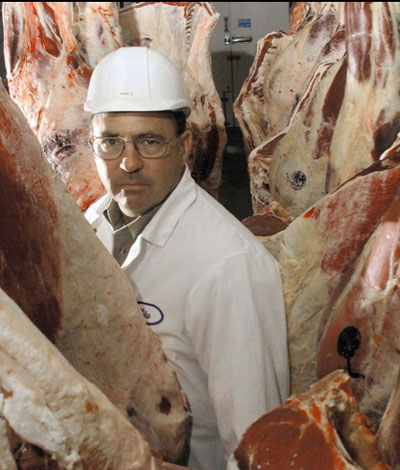By Hal Walter
When Mike Callicrate decided to open Ranch Foods Direct back in 2000, he didn’t realize he’d practically need to rebuild an entire trade to do so.
However, when he advertised for employees he found the industrialization of beef processing had completely wiped out an entire generation of meat cutters.
Even more insidious, he believes the big meat packers did it intentionally.
“That was quite the realization to find there were very few people that knew how to do everything from when a carcass comes in,” he says. The only meat cutters he could find were those who had worked for the bigger food retailers and were trained to deal with what is known in the business as “boxed beef.”
For example, a meat cutter in the typical assembly line would receive a box marked “lip-on ribeye” and would take this larger piece from the box and cut it into ribeye steaks, a process that involves very little skill but an advanced degree in tedium.
So Mike went back to the drawing board.
“Where we found people who had the skills to actually cut up a carcass were retired grocery-store meat cutters, 60 years old or better,” he says. “During their careers they saw the transition from carcass beef to boxed beef. If you found anyone younger than that all he knew was boxed beef, which didn’t help us at all when it comes to cutting up a carcass itself.”
So he convinced meat cutters like Jerry Rodarmel, who owned a small packing plant in Pueblo before spending 25 years as a retail meat cutter with Safeway, to come out of retirement and teach some younger workers the trade.
Jerry says what he found upon re-entering the workforce was alarming. “There was no skill left,” he says. “It’s a shame, an absolute shame.”
Now Jerry can look around the Ranch Foods shop with pride as a new generation of skilled craftsmen go about cutting beef, pork, and lamb under his guidance.
This is a big contrast to what goes on at the major packing plants where, Mike says, workers in an assembly line process up to 400 cattle an hour.
“Now we have these big plants where you have to speak 110 different languages to communicate, and the typical worker is an ‘economic refugee.’” he says.
What’s more, he says it’s all part of Big Beef’s plan for cheap labor.
“They deskilled the trade as part of their strategic plan to make more money,” Mike says, noting the low-skill, high-turnover aspect further saves these companies money by excluding benefits to those who don’t stay with the job six months.
“It used to be that a skilled meat cutter was one of the highest-paid people in a community,” Mike says. “Now they live four or five families to a trailer house south of Garden City, Kansas, as the industry has grown to depend on economic refugees for cheap labor.”
“They say Americans don’t want to do these jobs. Well, nobody wants to do these jobs . . . A chain with 400 carcasses an hour, trying to keep the (feces) off the meat?
Nobody wants to do that. That’s abusive.”
Mike says, “It’s too bad consumers can’t taste the human suffering, poor animal welfare and environmental damage in the big packers’ meat. These would be very offensive flavors.”
Helping young people learn a useful trade at what amounts to a small college of meat-cutting at Ranch Foods Direct is just one more piece to the puzzle of rebuilding a sustainable local food network.
“We’re paying these kids that work for us a fair wage and we’re teaching these young people to cut meat,” he says. “This is very exciting.”
Mike Callicrate found the meat-cutting trade had been wiped out when he opened Ranch Foods Direct.














